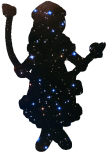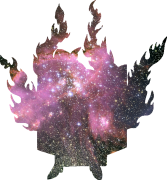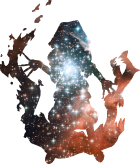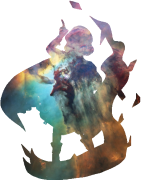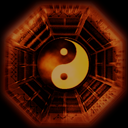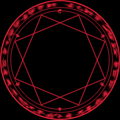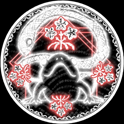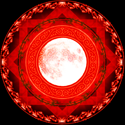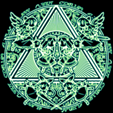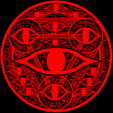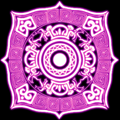Review: The Catalpa Bow
The Catalpa Bow - A Study of Shamanistic Practices in Japan is a book by Carmen Blacker. Published in 1975 and seeing two further editions in 2005 and 1986, its subject is exactly what it says on the subtitle. It’s based on Blacker’s studies she conducted in Japan in the late 1950s and early 1960s. The slightly curious name of the book is a reference to a shamanic instrument made from the wood of the Catalpa tree. With only one string it’s not intended to play music, but rather to provide a kind of constant droning sound. It’s featured prominently in a chapter at the start of the book, which details a Noh play telling a story that features some very archetypal elements of Japanese shamanism. (Noh itself, Blacker argues, is a survival of older forms of shamanism)
In a way, the book follows the footprints of Percival Lowell’s Occult Japan, coming out about 80 years after the publication of Occult Japan. Blacker’s approach however is quite different to Lowell, being quite less patronizing and rather than trying to necessarily explain phenomena, Blacker is mostly content to present and contextualize the subject of the book.
Blacker and Lowell both were sorts of ethnographers (Blacker a much more professional one), and much of the book is built on Blacker’s own experiences and observations. However, she also draws from a broad corpus of written sources, both Japanese and from outside of Japan. The roughly 80 years that separated Lowell and Blacker saw the birth of Japanese studies as an academic discipline, and a number of Westerners learning the language and developing a better understanding of the culture on its own terms.
In a way The Catalpa Bow serves as a kind of an update to Occult Japan. Japanese society changed greatly in the 100 years that passed, and Blacker notes the extent of these changes. Some of these changes happened within the timespan it took her to conduct the studies that formed the basis of this book. A sense of things “passing into fantasy” pervades the book. Some of the things written here are quite similar to things from certain Touhou printworks and things ZUN has said in interviews, so she definitively found some kind of a broader cultural strand.
It needs to be said outright that I found the book very enjoyable to read, and extremely informative. It offers a lot of context for subjects that lie on the margins of Japanese religion and folk beliefs - mediumship, possessions, exorcism - that are also part of the cultural tapestry that Touhou was woven out of. I consider this essential reading for anyone interested in the subjects of this website.
With this recommendation out of the way, let’s take a closer look at themes of the book.
Japanese Shamanism?
The idea of Japanese Shamanism was arguably first presented by Percival Lowell, who correctly observed similarities between certain Japanese practices and practices of shamanic cultures. The Japanese themselves did not perhaps conceptualize these things the same way, but by Blacker’s time, there was starting to be Japanese scholarship exploring the similarities in certain Japanese spiritual practices and shamanism.
Blacker identifies the induction of trance states as a core practice in several forms of Japanese spiritual practices and shamanic cultures. Indeed, it’s possible to trace influences from both Siberian and Polynesian traditions in Japanese spiritual practices. For example, the ideas of another world - ancestral world or world of the dead - beyond the sea, and spiritual forces dwelling in the skies and descending to the human world, are of likely Polynesian origin. Meanwhile, certain ritual practices and objects such as the prominence of mirrors and the outfits of the ancient miko suggest Siberian influence.
Japanese shamanism is however quite distinct in the ways for achieving the trance states necessary for shamanic work. Whereas the Siberians use drumming and sometimes intoxicants for this purpose the Japanese choice of tools are extreme austerities: sleep deprivation, fasting, repetition of magical formulas and sacred texts and cold exposure. Some of the training regimen for spiritual workers are terrifying, months of little sleep or food, constant recitals of mantras and ablutions with cold water in the middle of winter.
The cold exposure is not unique to Japanese, and one can find examples of similar practices in Siberia and Tibet. However, it’s a bit surprising how consistent and prominent role these practices have. The aim of the cold exposure seems to be to rouse a kind of “inner heat” or “inner fire” necessary for shamanic work. Blacker notes similarities to the Tibetan tummo practices, and finds parallels with the Indian idea of kundalini. Further similarities to kundalini are drawn from the important role of snakes, including fiery snakes, in mythology and symbolism surrounding Japanese shamanism.
Blacker also notes that various breathing exercises found in China and some other Buddhist cultures appear to be absent in Japanese shamanism. This is an interesting and hard to explain absence, and Blacker does not speculate why these practices are not found in Japan. I have found in some other - later - materials Shinto practices that incorporate breathing exercises, but it’s impossible for me to say whether these were disseminated after Blacker’s work.
The Japanese very strongly draw a correlation between extreme asceticism and spiritual power, and it was thought - likely even observed - that shamans who started slacking with ascetic practices started losing their power. In fact, one reason given for the waning of the shamanic practices is that people simply didn’t want to take part in extreme asceticism anymore. Blacker describes rather interesting consequences of this, such as invoked spirits possessing audience members instead of the medium!
Japanese shamanism prominently features the chanting of various spells and religious texts. The most prominent among these is the Heart Sutra. Another popular type of chant are various mantras of Fudo Myoo, who appears to be the patron of quite a many spiritual workers in Japan. The third popular mantra is the kuji-in, originally of Taoist origin. While orthodox Buddhism regards that the various mantras have inherent power, those involved in more shamanic forms of Japanese spiritual practices seemed to regard that a certain state of purity had to be achieved through ascesis and ablutions before the power of the mantras was unlocked.
When it comes to getting to the trance state itself, Blacker makes it seem quite effortless once the proper preparations have been made. While the preparation process is torturous, some shamans seem to reach the trance states almost instantly when the need arises. One man, a kind of village medium who was not a full-time shaman, described how he found himself sometimes slipping into states of mediumship against his will at times. Another case Blacker describes featured an old mountain ascetic who fell into trance almost instantly after he took a seated position and grabbed a gohei. Others needed more preparation, frequently the repeated chanting of mantras.
Mediums, exorcists and sect leaders
As the Japanese do not themselves have a native concept analogous to the all-encompassing “shaman”, the Japanese shamans rather have different names and different roles in their culture. The kind of shamans present in the country have also changed over the course of history, and the introduction of Buddhism was a big turning point in this regard.
Blacker puts the Japanese shamans into roughly two categories: the medium and the ascetic. The role of the medium is to go into trance states to speak out the will of various spirits and deities. The ascetic is more involved in exorcisms, and is a specialist in dealing with troublesome spirits.
The mediums are commonly women, though male mediumship is also found in certain traditions and practices. Blacker draws the lineage all the way to the historical miko, to a time when they were shamanic priestesses who went into trance states to commune with the spirit world. Historical evidence suggests they once held great influence, and certain Japanese myths prominently feature powerful shamanic queens and empresses. The miko maintained a kind of shamanic role all the way up to the Meiji era’s campaign against “superstition” in the 1870s, and there were entire communities of wandering miko.
In Blacker’s time the miko had become the shrine maidens of today, though sometimes the term was still used for people like village oracles. In the 1960s, the various women mediums were known with various names, and sometimes they had quite specialized roles. An example of very specialized mediums were the itako, women born blind who were trained as mediums to earn their living.
Blacker offers examples of both genuine and fraudulent mediumship she encountered. It should be noted the absolute vast majority of cases documented were of genuine trance states. The Japanese appeared to be quite able to distinguish between genuine mediums and pretenders. While the method of poking people with needles that was used in Lovell’s time seems to have disappeared, the medium’s behavior was the mark of a genuine medium. The less human they behaved while channeling a spirit, the more legitimate.
The ascetic is an archetypally male figure, though female ascetics also exist and Blacker met several of such, including one with “exceedingly tengu-like characteristics”. The ascetic type arrived in Japan with Buddhism, armed with the power of mantras that could subdue hostile spirits and resolve spiritual ailments. Types of ascetics included Buddhist monks, the historical hijiri and the yamabushi, practitioners of Shugendo.
Buddhist monastic life is to some extent ascetic and various Buddhist monks and priests were both historically and in Blacker’s time involved in spirit work. Japanese history is full of legends of monks and priests dealing with hostile spiritual forces. A particular modern day example given by Blacker is the exorcist practices of the Nichiren sect, which involved exceptionally harsh austerities to turn ordinary monks into men capable of subduing hostile spirits.
The hijiri were a historical phenomenon of Buddhist ascetics who were often itinerant and lived in solitude. They operated outside of established Buddhist frameworks, and popularized Pure Land practices.
Shugendo is a syncretic form of religion or spiritual practice found in Japan, which prominently features mountain asceticism. The shugendo undertake spiritual journeys into mountains, which were historically a symbolic journey through the six realms of Buddhist cosmology. Over time certain traditions and understanding of various rituals had become lost, and the mountain journeys had taken a more secular character-building nature.
However, not all of shugendo spirituality was lost. They still underwent harsh austerities and tests, some of which Blacker herself was allowed to take part in. They also conducted rituals featuring being splashed with boiling water, walking on fire and walking on swords, all which Percival Lowell also described. Blacker took part in fire-walking and was baffled by it, finding no believable explanation as to why the red embers emitted only faint heat against her soles. The rituals are thought to demonstrate spiritual power, but also serve shamanic functions. For example, originally fire-walking was seen as a way to rouse “inner fire”.
Sometimes these two types of shamans would collaborate. For example, temples performing exorcisms would use mediums to interrogate and identify the spirit possessing a person before subduing it. Apparently in history, it was also fairly common for mediums and ascetics to marry each other.
A third type of Japanese shaman that Blacker represents are the various figures that in her time had gone on to found various New Religious Movements. Many of the movements shared remarkably similar origin stories. An individual suffers from misfortune or strange ailments for a prolonged time. Eventually they have an earth-shatteringly powerful spiritual experience and come into contact with some kind of a patron deity. This contact results in resolution of their previous ailments and misfortunes, and a remarkable shift into a more charismatic personality. Many of these people were reputedly in possession of supernatural talents of prophecy or healing after undergoing their ordeal. Sometimes the patron deity presents itself as a kind of original or singular deity, giving certain New Religious Movements a henotheistic or monotheistic character.
The Japanese Supernature
The Japanese have a rather rich history of ideas about the numinous, and sometimes these ideas have found conflicting interpretations, changed drastically over time or have remained rather undefined. An example of these are the various rather contradictory ideas about life after death and where the spirits of the dead go.
Multiple meshing and clashing narratives about life after death, influenced by ancient Polynesian beliefs, native beliefs formed before Buddhism and Buddhist ideas exist in Japan. The land of the dead is variously seen as an other world beyond the seas, an underworld, a place in the mountains, or something that conforms to Buddhist ideas, or a mix of these. Geographical location seems to have influenced these ideas. In coastal areas, in Blacker’s time there were more narratives about a spirit world beyond the seas. Inland, ideas about the dead traveling to mountains, where they would then return during certain times of the year were prominent. Sometimes these mountain narratives were mixed with Buddhist beliefs, and hells or paradises were seen manifest in concrete locations in the mountains.
Common belief mixed Buddhist ideas with other beliefs, and saw spirits of the dead lingering in proximity to the human world for some time before moving on to new incarnations or other realms of existence. Mediums would commonly report that they could tell the age of spirits by how they looked, with older spirits becoming more and more akin to a sphere of light in contrast to a human shape. Ancestor spirits would need proper care and respect from surviving family members, or they could turn into malicious spirits that cause trouble.
Ancestor veneration is tied to one of the most iconic categories of Japanese spiritual entities, and that is of course the kami. It’s thought that ancestor spirits - whether all of them or some depending on the region and person - would turn into kami. This was in particular related to mountain-related beliefs, where the ancestor kami were thought to return to villages of protectors that would help guarantee good harvest. This idea of kami as ancestors is tied to how they were often presented and reported as elderly dignified men. The Okina noh mask is a kind of a generic stand-in for a joyous ancestral kami, and performing the titular play is thought to bring good fortune.
While some kami were conceptualized as ancestors and appeared as elderly men, others were seen in more otherworldly terms and could manifest as basically anything. An example given by Blacker is a rider on a horse, shrouded in such thick mist that it was not possible to see its true form, with only legs clearly visible. White snakes and dragon-like entities were another common manifestation, and snakes were an especially common form of tutelary deities.
Some people could receive visions of the kami even in the waking world, but the most common way for the kami to interact with people was via dreams. Dreams where kami appear are called reimu, or a divine dream. Frequently the kami would in these dreams tell people to change their lives, sometimes asking them to embark on pilgrimages or shamanic journeys. People took their reimu extremely seriously, and refusing the call could lead to problems like ill health or neurosis that would not resolve until the call was answered.
There were accounts of some mediums being married to a kami, and this mirrors Siberian practices. It’s a bit unclear what this marriage entailed in Japan, but in Siberian traditions it was variously seen either in more symbolic or literal forms. Snake kami were a common form of spirit spouse for women. There were also legends suggesting a kind of tradition of spirit marriages involving men. These include tales of snake or dragon women taking human husbands. The prominence of snake-like entities in stories is certainly very fascinating in light of similarities some shamanic practices share with kundalini practices of India.
Ancestors and kami are not the only inhabitants of the Japanese spiritual landscape. While Blacker mentions some types characterized as oni or youkai in passing, the one category that finds most significance due to their ties to shugendo are the Tengu. The Tengu are of ambivalent character, on the other hand being protectors of mountains and to some extent the yamabushi, but on the other hand they can cause trouble.
One of the most fascinating parts of the book is Blacker’s retelling of an incident where she met a mountain ascetic woman that exhibited Tengu-like characteristics. The woman uttered strange prayers to an old tree, calling up daitengu and kotengu. When she finished and Blacker spoke to her, she gave very brief answers, telling that if one practices the ascetic arts like she does they can see the tengu, and that the kami of the tree she was praying to is powerful and over a thousand years old. The woman had an unusually brown and birdlike face, and her eyes glinted like steel, a characteristic associated with the Tengu of legends. She plunged down the slope at great speed, skillfully weaving her way around the difficult terrain.
Mountains and their inhabitants are featured very prominently in Japanese beliefs, and mountains act as a substitute for a curious absence in the Japanese spiritual landscape. The absence in question is the lack of an axis mundi, a World Tree or World Pillar present in many other mythologies. This is possibly a holdover of a more “flat” Polynesian view of the world. With Buddhism however came a substitute for the World Tree. This is the Mount Sumeru of Buddhism, which stands in the middle of the six realms of existence. In some places, a local mountain became a kind of representation of the axis mundi.
Reading Blacker’s book leaves on with a strong impression of how Japanese spirituality is enmeshed with the physical world and concrete locations found within the physical world. From single trees or rocks thought to be places where kami would descend to valleys thought to be Buddhist hells or paradises to entire holy mountains, Japanese spirituality isn’t “out there”, and the supernatural is very much super-natural.
Types of Spirit Activity
The various types of spirits are of course not just static set dressing, but active agents of their own. Some appear to be a rather distant and passive presence - at least as long they are respected - while others appear to take more proactive roles in human events. As shamanism is about interacting with the spirit world, the various types of spirit activity are detailed in Blacker’s book.
Some spirit activity was of benign nature and are intentionally conjured by mediums. These include prophecies, healing and bestowing gifts of supernatural power. Contacting the kami to deliver prophecies was a common form of mediumship. Some experienced a kind of personal healing by undergoing the shamanic initiation, and many were left with abilities such as clairvoyance or clairaudience or the ability to clearly perceive spirits. Some kind of spirit healing abilities were rarer, but at least one instance of such was reported by Blacker.
However, sometimes spirits would cause trouble to humans. This could result in possessions, which Blacker divides into four categories. The first category is strange physical symptoms and pains. The second category is hallucinations without change in personality. The third category was change in personality, often a very dramatic and disturbing one. The fourth category was change in personality with the possessing entity communicating through the possessed.
The kinds of entities capable of hostile possession of people which Blacker gives examples of were kami, dead ancestors and various animal associated spirits, mostly kitsune, but also snake and cat spirits. The reasons for possessions fall into the categories of urami, tatari and tanomi. Urami is a possession caused by unprovoked spite. Tatari is an act of revenge for wrongdoing. Blacker gives kitsune spirits disturbed from their sleep or kami insulted by humans as examples of spirits performing tatari. Tanomi is a possession done to deliver a request. Frequently tanomi were performed by ancestor spirits to correct neglect of rituals related to ancestors, but sometimes also by other spirits for more selfish reasons.
These different causes required different solutions. Urami would require a harsh scolding and subduing. Tatari required a scolding, but also a promise that the cause of offence would be corrected. A tanomi would require the fulfilment of the request. Sometimes this required bargaining, and Blacker gives an example of a kitsune spirit demanding abura-age and eventually settling for five slices of it. Frequently the process of solution for all these types involved some level of appeasement, such as constructing and maintaining a small shrine.
The final case of spirit activity involving humans are various kinds of spirit abductions. Blackner’s writings give an impression that boys in particular were in danger of this happening. Sometimes they were of malicious nature, sometimes of mixed character, and sometimes just bizarre. An example of malicious abductions were Tengu snatching young boys and feeding them animal dung and driving them insane or turning them dim-witted. However, sometimes these boys returned with spiritual powers, sometimes at the price of having their psyche damaged.
Another class of spirit abductions that seemed to target mostly boys were kamigakushi, or getting spirited away. These were mostly just strange. A boy would disappear and be later returned, occasionally in strange or hard to reach places such as the eaves of a temple. The boy would have an astonishing tale to tell. They told tales such as meeting a yamabushi and being flown through the air to some kind of magical realm or faraway places, such as China or the far north. In there, they would see unusual events, like crowds of people engaged in strange dancing, or repeatedly injuring themselves but returning to unharmed states. Eventually the boy would long for home and be returned to the astonishment and relief of villagers. A particularly fascinating tale from the 1820s was of a boy taken to extreme north, where the sun didn’t set, as it indeed does not set in the summer.
How Japanese Shamanism Passed Into Fantasy - and out of it
All of The Catalpa Bow is kind of saturated with this sense of Blacker witnessing the final moments of something historical before it vanishes.There are some traditions which she saw crumble during the time of her research for the book. The saddest example of these are the Mt. Ontake traditions, notable for the fact that Mt. Ontake was also featured in Occult Japan. Blacker offers vivid descriptions of the mountain mysticism, mediumship and demanding, rough pilgrimages of the premodern form she witnessed. However, coming to revisit a mere few years later, she found a highway hewed into the mountain, a hotel with parking lot constructed and a loud and intrusive TV crew documenting a boisterous sumo wrestler looking man acting in a pre-scripted manner, almost as a crude parody of the previous pilgrimages she saw.
Elsewhere too, the tradition was dimming. An example of this is the blind itako seers. Blacker notes that by the time she was doing her research, the itako seemed to have mostly become actors in a kind of standardized psychodrama, where they gave rather stock answers to queries about the well-being of dead relatives. Another example of the decline was within shugendo. By Blacker’s time the symbolic dimension in shugendo was crumbling. Yamabushi were forgetting how to perform the correct rituals and the dimension of spiritual rebirth was waning.
Another example were certain village oracle traditions, which seemed to have collapsed because people could simply not bother to undergo the harsh austerities or the rigid maintenance of ritual sites. The crumbling of ritual discipline had some rather fascinating effects. It’s not surprising that mediums who didn’t bother to do proper austerities wouldn’t any longer be able to enter trance states and experience the possession by local kami. However, what is more surprising to the more non-spiritual readers would be that sometimes possessions still happened, they were simply of different nature. Instead of the mediums becoming possessed by the kami, it was them becoming possessed by dog spirits. There were also instances where the kami did perform a possession - on an audience member instead of the medium.
I would have liked Blacker to offer more of an analysis of why the traditions were collapsing. I understand that the zeitgeist of the 1960s was very different, one where disenchantment and modernization seemed to be like an inevitable law of nature. She does in the last chapter write of how people no longer need gods or spirits to explain phenomena, yet she herself struggles to explain some phenomena she witnessed. At best we are left with descriptions of people just kind of giving up and things getting rolled over by a tide of modernization and disenchantment.
Blacker was fully justified in expecting these traditions to completely evaporate. However, such did not happen. In the preface to the 2nd edition, she notes that Japan has seen an explosion of interest in folklore, while shamanism has become a quite trendy subject in academia. In the 3rd edition preface she notes that shamanism in the West has become part of the broader neo-spiritual movement. While she doesn’t see a similar wave in Japan, she notes the 1980s “occult boom” and that contrary to her expectation, many of the traditions depicted not only survived, but are flourishing - maybe in altered forms, but still flourishing.
I don’t think it’s an disagreeable statement to say that the tide of disenchantment has turned, and that many are strongly questioning the modern project. Where in the 1970s one could be very confident in the ability of science to explain everything, we now face a world where science is unraveling, beset by the various replication crises, the crisis in cosmology and the failure of CERN to deliver new breakthrough physics and corruption.Those first and final answers might not be so forthcoming as many explained, and even in a world where lightning can be explained as an electric discharge, gods and spirits still find their dwellings.
While perhaps she didn’t quite intend it to be read this way, The Catalpa Bow is also a description of humans abandoning the spirits. It seems less like the spirits failed to show up, and more like humans failed to show up to them. Such is of course not limited to just Japan. We live in a world that many would describe as “cursed”, spending time on an internet that is “dead” and “haunted”. The numina never went anywhere, and lacking mouths willing to speak for them, they found new ways to speak - and to act out their ire. If one truly feels the world is cursed, they should ask cursed how - urami, tatari or tanomi?
Touhou and the Return of the Shamaness
To wrap up this review, I’ll add a few words on how this recontextualized Touhou for me. Having been to Japan and studied quite a bit of their folklore and religions, there were some things in this book that were quite familiar to me. However, it does feel that even for me this book did add much, and for some who are not so read and have not personally been there, I believe this book can be quite eye-opening.
The book reiterated for me what an important role women had in Japanese spirituality. The miko of old times were instrumental for communicating with the deities, and it was only the embarrassment the Meiji regime felt at the perceived "superstition" of Japan that caused their role to be reduced. My research has also revealed that the actual gender of several important kami are unknown, including ones as crucial as Yagokoro Omoikaine no Mikoto. Considering the efforts at masculinizing Amaterasu Oomikami through syncretism with the male-depicted Dainichi Nyorai, I have to wonder if Japan originally had even more important goddesses than the present forms of the myths tell.
To me, Touhou seems like a kind of outpouring of the long-repressed divine feminine in Japan. It’s full of miko and witches and goddesses and powerful female monsters. For many, the primary merits of the series are in the realm of beauty and relationships through the game’s aesthetic qualities, the profuse amounts of fan art, the community and the doujin culture. I enjoy the games, but many say they are rather unpolished and not very challenging or well-designed compared to other SHMUPs that then perhaps thrive on more typically “masculine” merits.
Reimu and Sanae might rarely be depicted doing very typical miko business and Touhou’s depictions of channeling spirits are less shamanic trances and more computer RPG monster summoning fare. However, it’s possible to see the game protagonists as kind of spirit guides, psychopomps, guiding the player through a kind of simulated spirit journey. Basically all of Touhou games feature some kind of travel to other realms, and often these follow quite archetypal patterns of ascending to the skies or descending to the underworld - sometimes both.
It’s deeply fascinating how the main protagonist of the series, a miko, is called essentially “Esteemed Companion of a Divine Dream”, especially now knowing the full importance people gave to their reimu. While the Japanese traditions don’t put quite as strong emphasis to spirit guides as some, the element of it is still there. Most commonly they were conceptualized as the boyish douji, but other depictions also exist. What would a miko of the “other side” be, what kind of a spirit would try to contact humans for other spirits?
There is precedent for kind of simulated spirit journeys in the form of shugendo pilgrimages, and while it would be ridiculous to compare Touhou to shugendo, there is something to the repeated exposure and singleminded determination needed to clear these games that is kind of extraordinary. For some people, me included, the simulated journey kicks off a real one.
Reading this book, I remembered a dream I had before what I considered the start of “the events” for me. In it, Reimu appeared to me. She looked incredibly real. We were at a forest, and she led me through it, into an old style of a mansion particular to the area where I live in. I didn’t think much of the dream at the time, but found it remarkable how vivid it was. Touhou was still just a doujin game series to me at that point. Later, when my perspective shifted, I didn’t really regard the player characters as their own spirits, mostly because they lacked clear mythological counterparts. But I might have been wrong, so if you see a reimu about Reimu, take it more seriously than I did.
In many ways, the book also seemed to legitimize my own experiences, particularly how seriously people took their reimu. There were certain very specific elements of the divine dreams, the forms kami took and ways they spoke, that were exactly as things I have experienced are. I really didn’t need more reassurance at this point anymore, but it was surprising to get it in such a specific form.
Something worth noting here is that while there isn’t quite a direct analogue to the muses in Japanese culture, some credit shamanism with the birth of Japanese forms of poetry. Some even go so far as to say that the trance utterances of ancient miko were the “womb of poetry”. Who is to say that other forms of channeled art aren’t possible? I’m once again reminded of ZUN’s recent comments about how “the characters choose when they want to appear” and how certain singers in the Touhou seem to almost embody the characters while singing from their perspective…
The ideas about Touhou as a manifestation of the divine feminine and how the “player characters” are spirit guides or psychopomps deserve to be explored in depth elsewhere. I’ll wrap this up by saying that beyond these things, the book offered a lot of meat around the yet somewhat skeletal understanding of Japanese mythology, culture, history - and shamanism - that I had. It’s wonderfully vivid, full of fascinating anecdotes that sketch out just how deeply souled Japan is outside of it’s modern core. There is much more in there than I can go through in this review. Understanding how rapidly and strongly the disenchantment reversed there also contextualizes Touhou - these things never really passed into fantasy in Japan.
